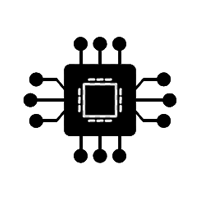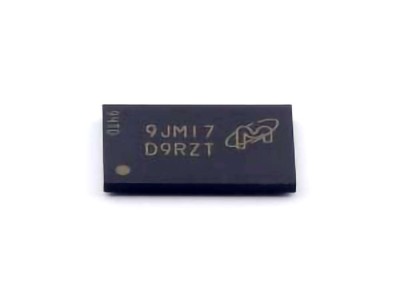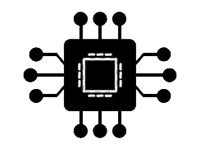
Understanding the M24C08-WMN6TP EEPROM and Common Issues
The M24C08-WMN6TP is a popular 8K-bit (1024 bytes) EEPROM memory chip from STMicroelectronics. It uses the I2C interface for Communication and is widely used in various consumer electronics, industrial applications, and embedded systems. Despite its reliability, engineers and technicians often encounter a few common troubleshooting challenges when integrating or using the M24C08-WMN6TP.
Common Issues with the M24C08-WMN6TP EEPROM
1. Communication Failure via I2C
One of the most frequent issues with the M24C08-WMN6TP EEPROM is communication failure between the device and the microcontroller or other communication interfaces over I2C. This can occur due to various reasons such as incorrect wiring, improper I2C clock speeds, or incorrect addressing.
Symptoms:
The EEPROM does not respond to commands.
The system hangs or returns a "no acknowledgment" error.
Causes and Solutions:
Incorrect Addressing: The M24C08-WMN6TP uses a 7-bit address (0x50). Ensure that your system is set up to send this address correctly during the communication process.
Check I2C Wiring: Double-check that the SDA (data) and SCL (clock) lines are correctly connected, and make sure there are no floating lines or loose connections. Use pull-up resistors (typically 4.7kΩ) on both SDA and SCL lines to ensure proper signal integrity.
I2C Speed: The M24C08-WMN6TP supports standard-mode I2C (100 kHz). Ensure that the clock speed of the I2C bus is set correctly and does not exceed the maximum frequency supported by the chip.
Noise Interference: I2C communication can be sensitive to electrical noise, especially when long cables or wires are used. Make sure your wiring is kept short, and if necessary, shield the connections to minimize noise.
2. Write Failures or Data Corruption
Data corruption or failures during write operations are another common issue that users face when working with EEPROM chips like the M24C08-WMN6TP. This issue can manifest as incorrect data being written or the chip failing to acknowledge a write operation.
Symptoms:
The stored data is incorrect after writing.
The EEPROM fails to confirm a successful write.
Causes and Solutions:
Write Protection: The M24C08-WMN6TP has built-in write protection features. Ensure that the Write Protect (WP) pin is not tied high. If the WP pin is asserted high, it will prevent any write operations. Connect the WP pin to ground to allow writing.
Programming Voltage: Ensure that the EEPROM is supplied with the correct voltage (typically 2.5V to 5.5V). A lower voltage may cause the chip to fail during write operations, leading to data corruption.
Timing Issues: The EEPROM requires adequate time between write cycles. The M24C08-WMN6TP requires a minimum of 5 ms to store data into non-volatile memory. If your system sends multiple write commands too quickly without respecting the write cycle time, the data may not be stored correctly.
Endurance and Wear: While the M24C08-WMN6TP supports a large number of write cycles (typically 1 million), excessive write cycles over a short period can cause wear and tear on the memory cells. If you are performing frequent writes, consider using an external buffer or limiting the number of writes to prevent premature wear.
3. Power Supply and Grounding Issues
As with many electronic components, power supply and grounding issues can lead to erratic behavior or complete failure of the EEPROM. Fluctuations in the supply voltage or poor grounding can cause the EEPROM to malfunction or fail to store data correctly.
Symptoms:
EEPROM fails to initialize or respond.
Unpredictable behavior, such as data corruption or failed reads/writes.
Causes and Solutions:
Stable Power Supply: Ensure that the EEPROM is powered by a stable and regulated power supply. Voltage spikes, drops, or fluctuations can cause the device to malfunction. Use a low-dropout regulator (LDO) if necessary to provide a steady voltage.
Proper Grounding: Ensure that the ground pins of the EEPROM, microcontroller, and other related devices are properly connected. A poor or floating ground can cause the EEPROM to behave erratically.
Decoupling capacitor s: Place a small ceramic capacitor (e.g., 100nF) close to the VCC and GND pins of the EEPROM to help filter out high-frequency noise and ensure stable operation.
4. Incorrect Data Reads or Loss of Data
In some cases, users report issues where the EEPROM does not return the expected data during a read operation. This could be due to incorrect timing, a mismatch between the memory address, or improper handling of the data read command.
Symptoms:
The data returned from the EEPROM does not match what was written.
Data seems to be lost after a power cycle.
Causes and Solutions:
Addressing Error: Ensure that the correct memory address is used when performing a read operation. The M24C08-WMN6TP stores data in a continuous address space, and any error in specifying the address could result in incorrect data being returned.
Timing and Protocol Issues: Ensure that the correct protocol is followed for read operations, including proper start and stop conditions, and acknowledgment bits. The EEPROM requires certain timing intervals between operations, and failure to respect these timings could cause data corruption.
Data Retention Issues: The M24C08-WMN6TP has excellent data retention properties, but extreme conditions (e.g., prolonged high temperatures) can cause loss of data. Always ensure that the device operates within the specified temperature range of -40°C to +85°C.
Advanced Troubleshooting and Proactive Solutions for M24C08-WMN6TP EEPROM
While the issues mentioned above are the most common, users often encounter more advanced problems or require proactive solutions to ensure smooth operation of the M24C08-WMN6TP EEPROM. Here, we’ll explore more complex troubleshooting steps and tips for enhancing performance and reliability.
Advanced Troubleshooting and Solutions
1. I2C Bus Contention or Conflicts
When multiple devices share the same I2C bus, bus contention can occur, leading to errors and unpredictable behavior. This happens when multiple devices try to communicate at the same time, which results in data collisions or bus lockups.
Symptoms:
The EEPROM is intermittently accessible, or fails to respond altogether.
The I2C bus becomes unresponsive.
Causes and Solutions:
Bus Arbitration: Ensure that there is only one master on the I2C bus. Multiple masters can cause contention. If multiple devices are intended to communicate over I2C, ensure that only one device is transmitting at any given time.
Use of External Multiplexers : If multiple I2C devices need to share the bus, consider using I2C multiplexers or switches to isolate devices and prevent conflicts.
Bus Length and Capacitance: I2C is designed for short-range communication. If the bus is too long, or if the capacitance of the wires is too high, it can lead to communication problems. Limit the length of the I2C lines and ensure that proper pull-up resistors are used.
2. Overheating or Excessive Current Draw
In some cases, the EEPROM may overheat, leading to unexpected behavior such as write failures or even complete device failure. This can happen if there is excessive current draw or inadequate heat dissipation.
Symptoms:
The EEPROM becomes excessively hot to the touch.
The EEPROM stops responding after a certain amount of time.
Causes and Solutions:
Current Draw: Ensure that the EEPROM is not drawing too much current due to incorrect wiring or a short circuit. Measure the current draw during operation, and ensure it remains within the specified limits (typically under 1mA during operation).
Thermal Management : If the EEPROM is located near heat-generating components, it may be necessary to implement additional thermal management, such as heat sinks or proper ventilation, to prevent overheating.
3. Ensuring Data Integrity with Error Checking
For applications that require high levels of data integrity, it’s essential to implement error-checking mechanisms to ensure that the data written to and read from the EEPROM is correct. Using simple error-checking algorithms like parity bits or checksums can help identify and correct data corruption.
Symptoms:
The data integrity of critical data is questioned.
Frequent communication errors lead to unpredictable behavior.
Causes and Solutions:
Error-Detecting Codes: Implement checksums or cyclic redundancy checks (CRC) in your data communication protocol to ensure that the data written to or read from the EEPROM is correct.
Write Verification: After a write operation, read back the data and compare it to ensure that it has been written correctly. This can catch any issues caused by communication errors or hardware faults early in the process.
In conclusion, while the M24C08-WMN6TP EEPROM is a reliable and versatile memory device, it’s not immune to common issues. Understanding potential pitfalls and proactively addressing them can significantly improve the reliability and performance of your system. By following the troubleshooting and solution steps outlined above, you can address many of the common challenges and ensure smooth operation in your designs.
If you are looking for more information on commonly used Electronic Components Models or about Electronic Components Product Catalog datasheets, compile all purchasing and CAD information into one place.
Partnering with an electronic components supplier sets your team up for success, ensuring the design, production, and procurement processes are quality and error-free.


